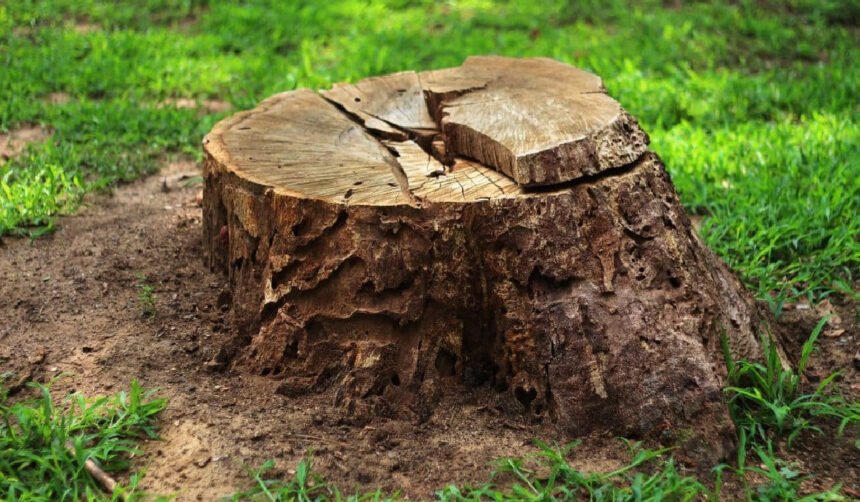When a tree is cut down, the work may seem complete, but the remaining stump tells a different story. Whether left in a backyard, commercial lot, or forested area, tree stumps can present challenges that range from aesthetic and safety issues to long-term environmental concerns. This is why stump removal is a crucial final step in the tree management process.
Too often, property owners overlook the significance of removing tree stumps, either because of the cost, the complexity, or the assumption that nature will take care of it in time. However, as we’ll explore in this article, leaving a stump behind can lead to complications that outweigh the effort or investment required to remove it.
From understanding why stump removal matters to reviewing the different removal techniques and the factors that affect the process, this article provides a thorough, practical, and sustainable look at managing tree stumps the right way.
Why Tree Stumps Shouldn’t Be Ignored
Although a tree stump may appear harmless, it can become a long-term nuisance. Below are several reasons why removing stumps should be a priority:
1. Safety Hazards
Tree stumps pose tripping hazards, especially in areas where people walk or children play. They can also obstruct visibility for vehicles and machinery on a property, increasing the risk of accidents.
2. Pest Infestations
Old stumps can become breeding grounds for pests like termites, ants, beetles, and fungi. These pests may eventually migrate to healthy trees or even nearby buildings, leading to costly infestations.
3. Regrowth and Root Spread
Even after a tree has been cut down, the roots may continue to grow, especially if the species is aggressive. This can lead to new sprouts, disrupt landscaping, and damage underground utilities or foundations.
4. Aesthetic and Property Value
From a landscaping perspective, stumps are visually unappealing and can detract from the overall appearance of a property. In real estate, a well-maintained yard without stumps is often seen as a higher-value asset.
5. Obstruction to Land Use
Whether you’re planning to build, garden, or install new landscaping features, a stump can be a physical obstacle. Removing it clears the way for better land use.
Understanding the Process of Stump Removal
Stump removal involves eliminating the remaining base of a tree after it has been cut down. Depending on the method used, it may also include removing the roots. The process varies in difficulty based on several factors, including:
- Tree species and root system
- Stump size and age
- Soil conditions
- Location and accessibility
There are several approaches to stump removal, each with its advantages and drawbacks. Let’s take a closer look.
Methods of Stump Removal
1. Manual Removal
This traditional method involves digging around the stump, cutting through the roots with an axe or saw, and physically pulling the stump out of the ground. It’s most effective for small or shallow-rooted stumps and is generally not recommended for large or mature trees.
Pros:
- Inexpensive
- No machinery required
Cons:
- Labor-intensive
- Time-consuming
- Not suitable for larger stumps
- Stump Grinding
Stump grinding is the most common and efficient method used today. A stump grinder is a specialized machine that grinds the stump down to several inches below ground level. While the roots are not completely removed, they typically decay over time without regrowth.
Pros:
- Fast and effective
- Suitable for any size stump
- Leaves the ground level and usable
Cons:
- Requires access to equipment
- May not fully eliminate root systems
Stump removal through grinding is widely preferred by professionals and homeowners alike for its balance of speed, safety, and minimal disruption.
- Chemical Removal
Chemical methods involve applying substances like potassium nitrate to accelerate the decomposition of the stump. After several weeks or months, the stump softens enough to be broken apart manually.
Pros:
- Low physical effort
- Cost-effective
Cons:
- Slow process
- Requires careful handling
- Environmental concerns if not used properly
Chemical stump removal may be suitable for non-urgent situations where time is not a constraint, and physical removal is not viable.
- Burning
Some property owners opt to burn the stump after drilling holes into it and applying fuel. While it can be effective, this method comes with safety and legal considerations.
Pros:
- Inexpensive
- Requires minimal equipment
Cons:
- Fire hazards
- May be illegal or restricted in some areas
- Incomplete removal possible
- Natural Decay
Leaving the stump to decompose naturally is the simplest method but also the slowest. It may take years, depending on environmental conditions and tree species.
Pros:
- No cost
- No effort
Cons:
- Very slow
- Risk of pests and regrowth
- Not aesthetically pleasing
This passive approach is rarely recommended unless environmental goals (like providing wildlife habitat) outweigh land-use concerns.
Factors That Influence Stump Removal Decisions
When planning stump removal, several variables must be considered to choose the most effective and practical method:
1. Tree Type
Hardwoods like oak or maple decompose more slowly than softwoods like pine. This affects both natural decay and the time required for chemical breakdown.
2. Root Depth and Spread
Some trees have shallow roots, making removal easier. Others, like willow or elm, have extensive root systems that may require professional intervention.
3. Soil Conditions
Wet, loose soil can make manual or mechanical removal easier, while compacted or rocky soils may complicate the process.
4. Purpose of Land Use
If the area will be used for construction, agriculture, or landscaping, full removal is often necessary. For conservation areas or wildland, mulching or natural decay may suffice.
Environmental Considerations
Proper stump removal not only enhances land usability but also contributes to environmental health. Poorly handled stumps can lead to:
- Soil degradation
- Invasive species spread
- Water pooling and mosquito breeding
Eco-conscious removal methods—like mulching the grindings into the soil, avoiding harmful chemicals, and preserving native root structures—can minimize these risks. When possible, consider options that contribute to regeneration, such as planting new trees after removal or using the mulch for erosion control.
Professional vs. DIY Stump Removal
While DIY methods can be tempting, professional services offer advantages such as:
- Faster results
- Access to specialized equipment
- Lower risk of injury or property damage
- Proper disposal of debris
Hiring a professional also ensures compliance with local regulations and safety standards, especially for large-scale projects.
Still, for small stumps or non-urgent cases, DIY can be a budget-friendly option if done safely and correctly.
Cost of Stump Removal
Costs can vary significantly depending on:
- Method used
- Stump size and location
- Number of stumps
- Contractor fees and equipment rental
On average, professional stump removal services range from $100 to $400 per stump, while DIY methods can cost considerably less, though they require time and labor.
Investing in removal often pays off through improved land value, safer environments, and reduced maintenance costs down the line.
Conclusion: A Small Step With Big Impact
Tree removal is only half the job. What remains hidden just beneath the surface—the stump—can become a lingering problem if left unmanaged. Whether you’re a homeowner, developer, farmer, or conservationist, making the decision to complete the job with proper fis a smart, forward-thinking move.
By selecting the right method for your situation, considering environmental and safety factors, and weighing the benefits of professional vs. DIY approaches, you can ensure your land is both functional and aesthetically pleasing.
In the end, clearing the way—literally—can open up new opportunities for planting, building, or simply enjoying a clean, hazard-free space.
For More Information, Visit Dotmagazine









